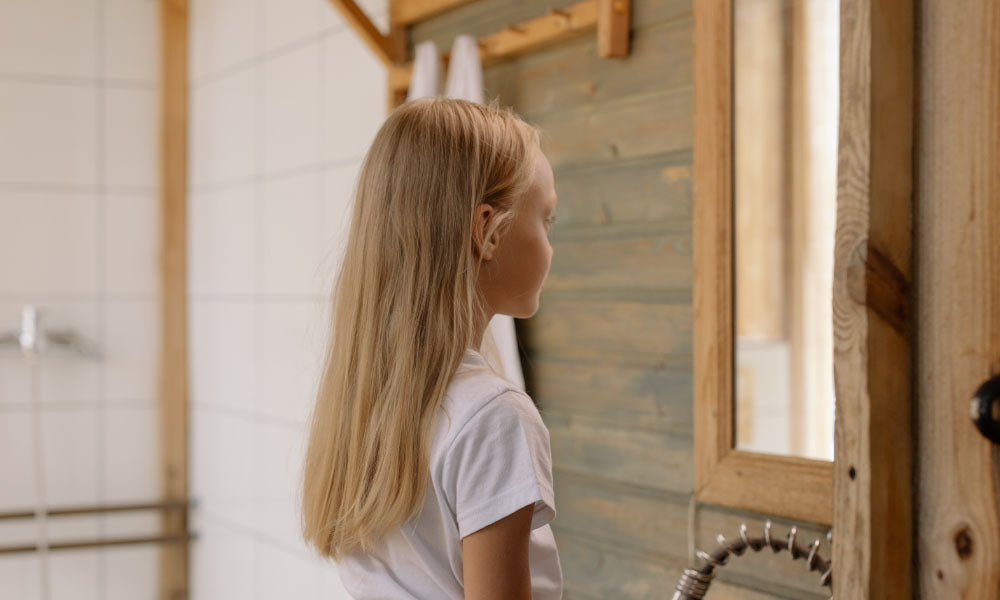In my work as a third grade teacher, I’m out on the school playground a lot. With an entire grade level usually outside at one time, in my school (as in most) there’s a certain controlled chaos.
Balls fly boldly through the air, this way and that. There are frequent lengthy, high-pitched yelps resembling animal screeches. Children run in small groups, crashing into each other and into stationary objects.
Recess is a busy, noisy, chaotic time, and it can be an introvert child’s worst nightmare. I’m not an introvert, but recess isn’t my favorite time of the day either. It’s a little manic? – over 100 children dashing wildly around in different directions. It’s the opposite of calm. Yet recess takes place before school, in the mid-morning and again right after lunch – times of day when some of us could really do with a little bit of quiet.
Introverts in my class often ask me if they can stay in for recess. They ask to read in the library, draw, play Legos or board games, or to help clean up or organize a section of the classroom. I used to believe that playground recess was the only kind of "real" recess and that it was a non-negotiable, fixed entity. I would tell an introvert child who asked to stay in that the answer was "no" and remind him/her that recess is an important time for socializing, play, and exercise.
That was before I read the book "Quiet: The Power of Introverts in a World That Can’t Stop Talking”, by Susan Cain. Cain defines introverts: "Those who prefer quieter, more minimally stimulating environments. The key is about stimulation: extroverts feel at their best and crave a high degree of stimulation. For introverts, the optimal zone is much lower.”
Her book helped me empathize with what my introvert students might be feeling when recess time came around – something the extrovert in me had never imagined before. My students hadn’t articulated their feelings to me or challenged my preconceived ideas. They’d always taken my firm, “You can’t stay in at recess” as a given and headed woefully outdoors.
Changing the dialogue about introverts and recess
I soon began to wonder if I was supporting introvert students at recess as best as I could. Children need daily opportunities to develop their social and emotional lives and to learn the skills of socialization and emotional regulation.
As long as kids have a daily opportunity for unstructured social time where they can choose which activity they’d like to do with their friends, I see that they are, in actuality, having a recess.
Many teachers at my school already give their students exactly that: “Choice Time,” or “Free Time,” within which kids get to choose what they do with their time and with whom. But it’s usually on a Friday afternoon, or at the end of the day. What if this choice time was part of recess, and happened more often?
Once I started talking about the different ways that recess could look, things began to shift. I know how critical physical movement and fresh is for children and so I regularly have my students run around or stretch during transitions between one lesson and another.
Sometimes we do specific exercises that are part of a program for schools called “Brain Gym.” I call these short periods of time where we move around “Brain Breaks.” Essentially, as long as students do have the chance to run around, stretch, and get outside regularly, then recess can, I think, be boundless in its possibilities and manifestations and not simply an outlet for physical activity or a designated socialization time.
Recess can be just as Dictionary.com defines it: "Temporary withdrawal or cessation from the usual work." Of course, fresh air and exercise is essential for invigorating and reviving us (introverts and extroverts alike) and I certainly wouldn’t advocate that children stay inside during every recess.
But I really do wonder, are we doing our best for introverts at recess? What if one classroom per grade level was designated a quiet zone for just one recess a day? What if we allowed children to spend one recess a day in the school library? What if we said yes when an introvert asked to stay in for recess? Your child’s teacher is a great person with whom to start the dialogue about your little introvert.
Introverts prefer quieter spaces with less stimuli
Think about how your child choose to spend his/her "at play" time when at home on a play date or with siblings. Do they make a den to retreat into together or alone? Do they choose to sit in a quiet room? In this vein, redesigning the physical space of playgrounds can have a wide-reaching impact.
What if the playground wasn’t all concrete? What if there was a cabana, marquee, or tent just for children who wanted to sit in a more peaceful place? Or, what if playgrounds had grassy areas where children could sit somewhere where the ground was soft beneath them and just talk, play, or do a quiet activity such as reading or drawing – a place to just be, without fear of being hit by a football just as they’ve settled into their latest chapter book? What if every playground had a designated "No ball area" or "No running" area?
At my school we recently solicited children’s thoughts on an ideal playground and we now have a grassy area (we’re an urban school, so the grass is fake, but grass nonetheless) where balls aren’t allowed. We have an area that is fenced off from the main playground, where small groups of children gather to chat, sit, and be peaceful.
They don’t have to worry about getting hit by a ball while they relax together. It’s made a world of difference. We have a bench now, too – because sometimes children want a comfortable place to sit down at recess. And some teachers are allowing children to stay in at recess sometimes – including me. Not every day, but sometimes.
Introverts are risk takers too – they just do it differently
School is, in many ways, an optimal environment for extroverts - the playground especially so. Cain talks about how extroverts generally get more excited than introverts and this is related to risk-taking. Extroverts rule the playground with their shrieking, loud games, ball games, and risk-taking endeavors.
The introvert child recharges her batteries not necessarily by being outside, but often by being quiet for a while, sometimes by looking inward, having quiet time – by having a break from an otherwise busy day jammed full of stimulation. Susan Cain notes that some of the world’s riskiest professions (traders, police offers, etc.) are done by introverts.
It’s not that they don’t take risks – it’s just that they’re more considered and thoughtful about the risks they take. They’re less impulsive. To be this way, they need down time – alone or just with one or two friends to think, consider, or reflect. In the same way that you allow the time and space for your child to have the down time they need at home, encourage him/her to seek out and speak up for this time and space at school if they need/want it.
Ideally, our schools and our playgrounds should allow for introverts to retreat from the world for a little while. It doesn’t always have to be you starting the dialogue with your child’s teacher or principal – you can encourage your child to ask for what he/she needs at school, too.
Introverts aren’t anti-social – they’re socially different
There are a few children in my class who spend most recesses together, sitting in a quieter part of the playground, reading their books together. They always read the same book, sharing a copy or reading identical copies, and they discuss it together as they read.
Sometimes they play a talking game together such as, “I’m going on a picnic” or take a slow walk around the playground looking for interesting things in nature. A nature walk, if you will. Or they’ll get some chalk and play a quiet game of hopscotch.
They want to be together, not alone, but being introverts they rejuvenate by being together doing something calming or enjoyable for them – something which isn’t always a physical activity. Being "at play" is different for every child and I know to honor the introverts at recess as diligently as I honor the extroverts.
Questions to ask your child’s principal about recess
- Is there a designated no ball "Quiet Zone" on the playground where children can choose to read or talk or play together quietly?
- Can my child bring a book, notepad or sketchbook out to the playground?
- Can playground chalk, jump ropes, and hula-hoops be provided? These can be great tools for solo, partner play, or small friend group play.
- Is indoor recreation time in a quiet room ever an option for recess?
- Are there places to sit down on the playground – benches, stools, or chairs?



